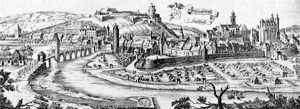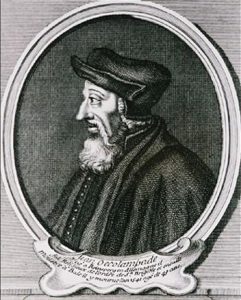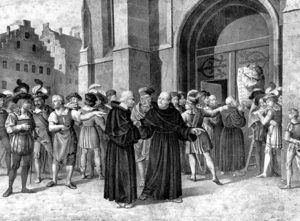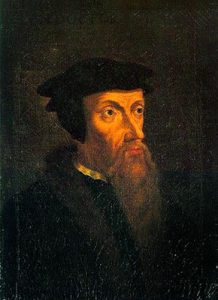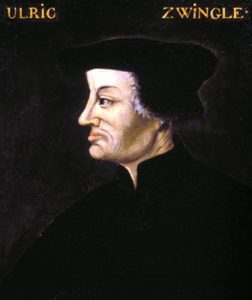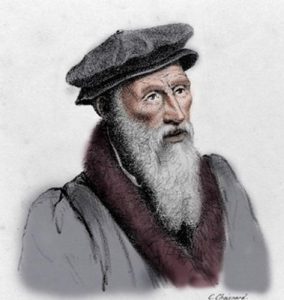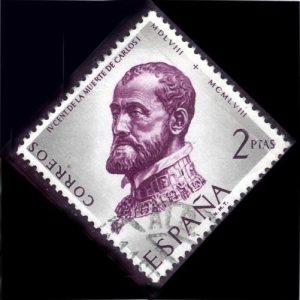A Lutheran Reformation
The Lutheran Reformation was introduced to the Principality at the time of prince Ulrich of Wurttemberg, Count of Montbéliard.
In 1522 Ulrich, after he had been in contact with Oecolampadius, welcomed Jean Gayling, a disciple of Luther. Ulrich thus showed his reaction against the abusive behaviour of the catholic clergy at that time.
In 1534, Oecolampadius sent Guillaume Farel to Montbéliard ; the latter had left the Catholic Church when he realized that reform within the church was impossible. In Montbéliard, Farel celebrated communion with both elements. In 1525, Erasmus wrote from Rotterdam, “Farel has been called to preach the Gospel in Montbéliard and he has been very successful.”
But the catholic cantons of Switzerland forced Ulrich to send Farel away from the county. In 1527, the bishop of Besançon excommunicated all the inhabitants of Montbéliard – a decision which he revoked in 1529.
The influence of the Swiss reformation
In 1535 the reformer Pierre Toussain arrived in Montbéliard. He was a canon in Metz – where he had known the influence of evangelical circles. He then moved to Bâle, where he stayed with Oecolampadius and met Farel ; later he met Zwingli in Zurich ; Zwingli explained to him his point of view on the presence of Christ at communion.
Upon his arrival in Montbéliard, Toussain opened a school for boys and girls. In 1538 he succeeded in getting the evangelical Church established in the principality : on 17th November 1538, count George of Montbéliard abolished mass and the catholic ceremonies in the county. At Easter 1539, the Lord’s Supper was celebrated according to evangelical principles. Towards the end of 1539, the first thirteen preachers engaged by Farel in Geneva came to Montbéliard and were inducted in rural parishes on the 1st of April 1540. This explains the Swiss Calvinistic influence on Lutheranism in Montbéliard.
In 1544, Toussain defined the sacrament of communion as being the true body and blood of Christ given to feed our souls ; obviously there was nothing physical about it ; according to Toussain, the sacrament concerned Christ’s spiritual, heavenly body.
In 1548, following his victory over the divided Protestant princes, the emperor Charles the Fifth enforced the Interim on the people of Montbéliard. The Interim was a doctrinal and disciplinary measure consisting of a toned-down version of Catholic doctrine and made compulsory until the meeting of a next Council. A joint religious system until 1553 : on the one hand, priests practised a pre-Reformation type of Catholicism and, on the other, the protestant preachers maintained their evangelical position.
A return to Lutheranism
In 1555, Toussain broke off his friendship with Farel and Calvin, on the grounds of the doctrine of predestination and the punishment of heretics – Calvin having given an example of this with the torture of Michel Servet.
During his Montbéliard ministry, Toussain had set up a school in every presbytery. He applied the provisions of the Augsbourg Confession, which he considered to be in accordance with the Word of God. He retired in 1571 and died in 1573, at the age of almost 75.
The Reformation had com to the country of Montbéliard without violence or bloodshed.

